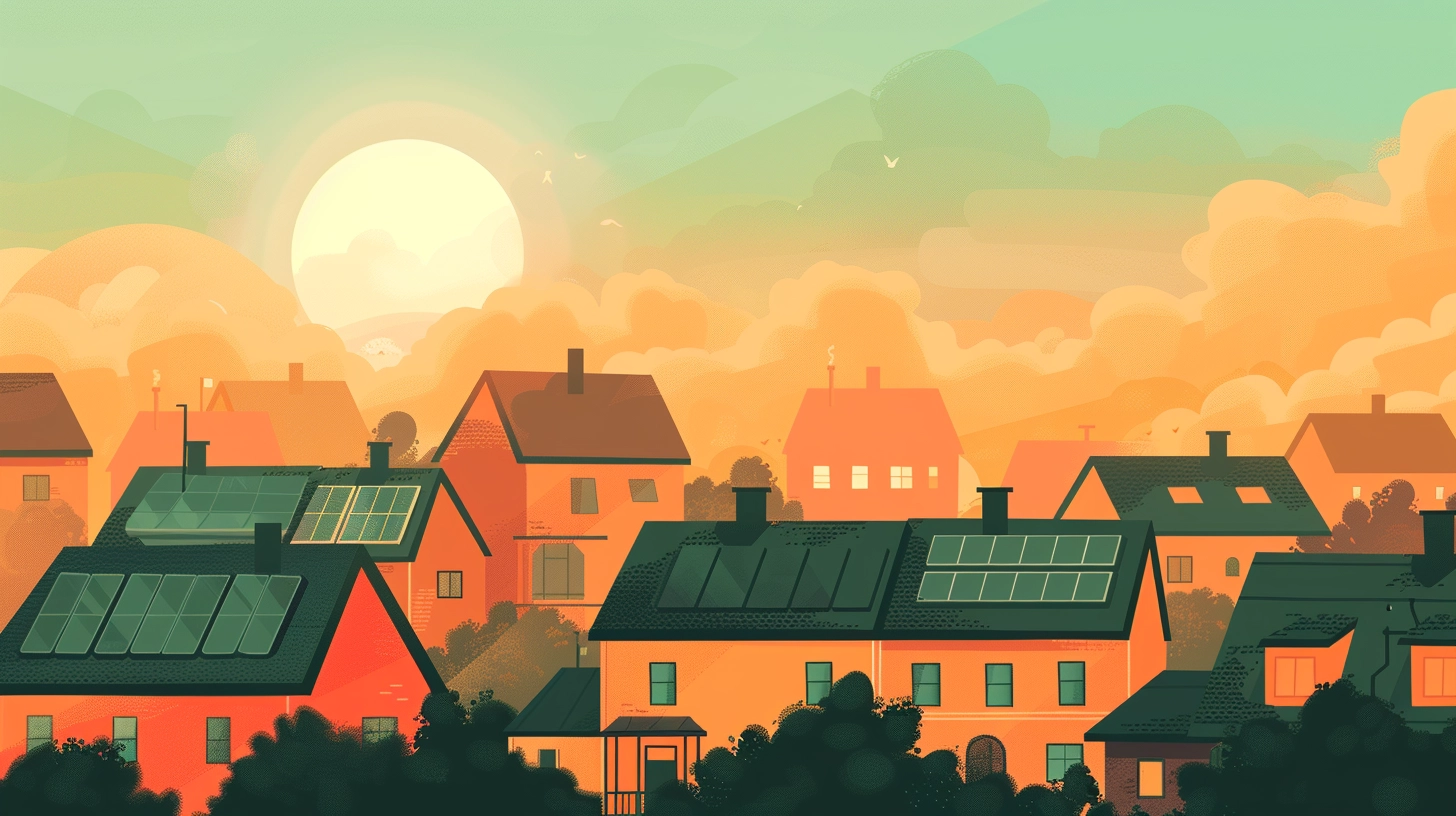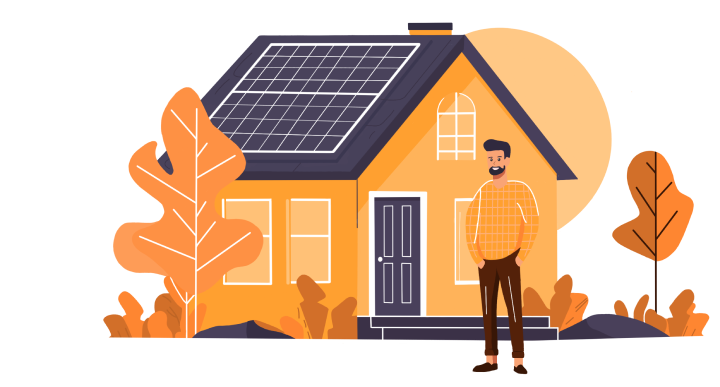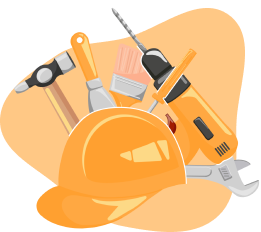Thinking about how to install solar panels on roof? Worry not; Solar Energy Host is here to guide you through each step. We'll teach you how to install solar panels so you can make informed decisions for your home.
This article covers preparing your roof, picking the right solar provider, and understanding the best way to install solar panels. Read on to discover how simple it is to start saving with your renewable energy source.
Step #1: Make sure your roof is solar power-ready.
Before pushing for solar power installation, it is important to make sure your roof is strong enough to support the weight and operational requirements of these residential solar panels.
You should consider having a professional check your roof. Different materials like asphalt and metal are strong and can hold a lot of weight, but tile and slate might need extra checks. A professional's extensive expertise ensures they know exactly how to install solar panels on roof.
You should also check the age and condition of your roof. Roofs that are over 20 to 25 years old or damaged might need to be replaced before installing solar panels. Moreover, you need to consider the roof's structure, like rafters and trusses, to make sure they're strong enough to support solar panels for home.
Maximize sun exposure: Determine optimal roof orientation.
Do you know how to install solar panels on roof for maximum sun exposure? Well, here are some tips!
The way your roof faces and its angle affect how well solar panels work. Roofs facing south in the northern hemisphere get the most sun. Roofs facing east or west still work, though they may not be as efficient. Tools like tilt frames can adjust the panels to catch more sun, making them more effective no matter the direction they face.
The best roof slope for catching the sun is between 30 and 45 degrees. If your roof is flatter, using tilt frames or special mounts on your solar energy system can help get the right angle to get the most sunlight.
Shadows be gone: Eliminate obstructions and shading issues.
Another important consideration in learning how to install solar panels on roof is checking for things that could block sunlight from reaching the panels. Before you can install solar power, look around for trees, buildings or other structures that may cast shadows on the roof.
Even a little shade can make the panels less efficient and lower the energy they produce. Things like chimneys, vents or skylights on your roof can also get in the way and might need special setup or changes in the panel layout.
Step #2: Prepare for solar panel installation.
Aside from learning how to install solar panels on roof, at Solar Energy Host, we offer a list of reputable providers near your location. You no longer need to search for "solar system installers near me."
This is made simple by entering basic details like your name, address and current energy bill. This helps us match you with the best options suited to your needs and the ones that can potentially give you more home energy savings.
We also provide you with quick access to competitive quotes. Upon submitting your information, we'll quickly provide estimates from trusted providers. This saves you time and lets you compare offers easily. You can then choose the solar panels cost and quote fit for your energy needs and budget.
After you get your quotes, you can see how much you'll save by switching to solar. Aside from immediate savings, this also includes long-term solar energy benefits like lower energy bills and possible state incentives.
Step #3: Get everything set up and connected.
Consult with your provider through a site visit.
A site visit from your provider is an important part of the solar installation process to make sure your property is suitable for solar panel installation. They will look at your electrical system, roof and any possible shade issues to ensure everything is ready for installation. They might also take photos and measurements to know how to install solar panels on roof more efficiently.
Talk to your provider about any documentation or paperwork.
Some legal and administrative requirements must first be completed before proceeding with the solar panel installation. There's no need to worry, though, as your provider generally takes care of most of the necessary federal permits and paperwork required for the installation. These documents typically verify that your home meets all safety standards and that the equipment can be properly installed.
Have your system activated.
The final step is activating your solar panel system. The team assigned to install solar panels will set up the system at your home, which might take a few days depending on the size and weather.
After installation, local government and utility representatives will check everything. If it meets their requirements, your system will connect to the power grid, or it can work on its own as an off-grid system.
Frequently Asked Questions (FAQ)
Can solar panels be installed on any type of roof?
Yes, solar panels can be installed on most roof types, including asphalt shingle, tile, slate and flat roofs.
Each type of roof might need a different method for installing the panels.
For example, asphalt shingle roofs use a system of flashings and rails. Tile roofs need special hooks because of their overlapping design, while slate roofs might need extra support because they are fragile. Flat roofs, on the other hand, might use tilt frames to get the panels at the right angle to catch sunlight.
How much weight do solar panels add to a roof?
Solar panels can add significant weight to a roof. Each panel typically weighs about 40 to 50 pounds, depending on the type and size. Including the mounting system and other parts, the total weight is usually 2 to 4 pounds per square foot.
What are the maintenance requirements for rooftop solar panels?
Rooftop solar panels are typically easy to maintain and must be kept clean to ensure maximum efficiency. Rain usually washes away most dirt and debris, but in dry or dusty areas, you might need to clean them yourself every six months to a year.
You can find professional solar panel cleaning services that also check for power efficiency. However, even without professional help, it's good to inspect your panels once a year to look for issues like loose connections or possible damages. Most solar panels come with warranties that help with maintenance over time.
Solar Energy Host: Your trusted solar partner
Switching to green energy can be a great way to cut down on your electricity bills. At Solar Energy Host, we make going green simple and stress-free. We link you directly to top solar providers in your area and give you an idea about the cost to install solar panels. This helps you cut down your electricity bills and make smart choices.
By using our platform, you gain the confidence to embrace a greener future easily and efficiently. Find out your savings potential with solar panels today!














